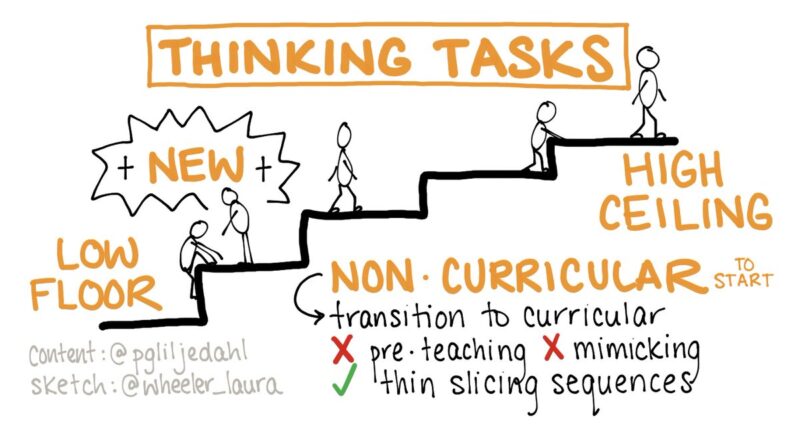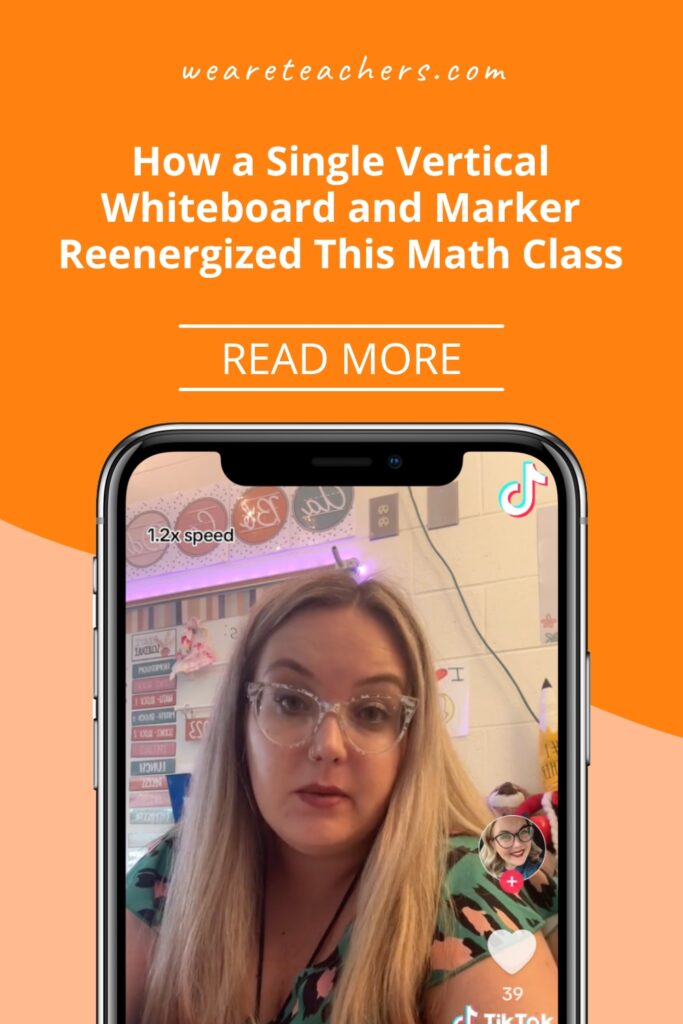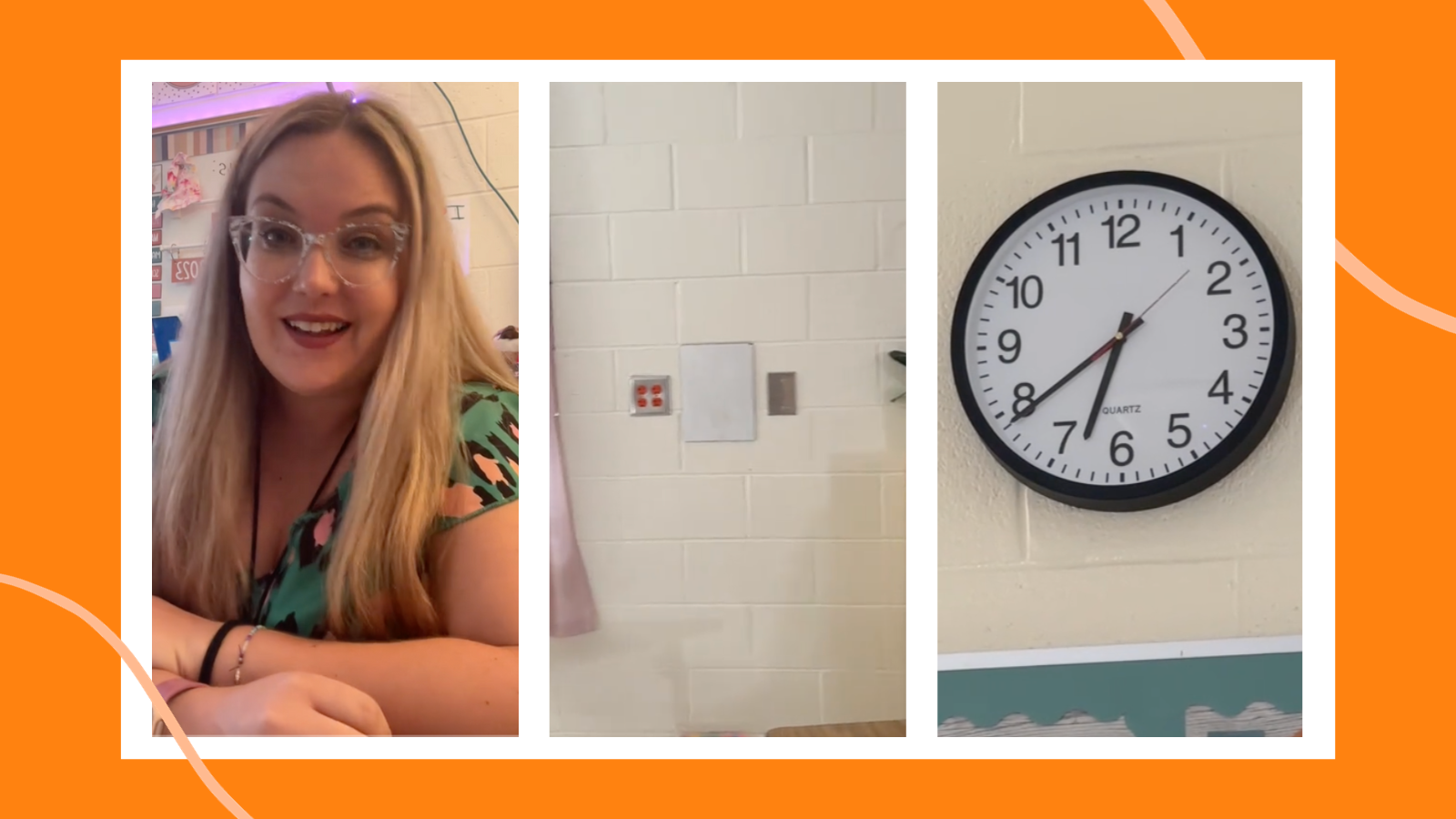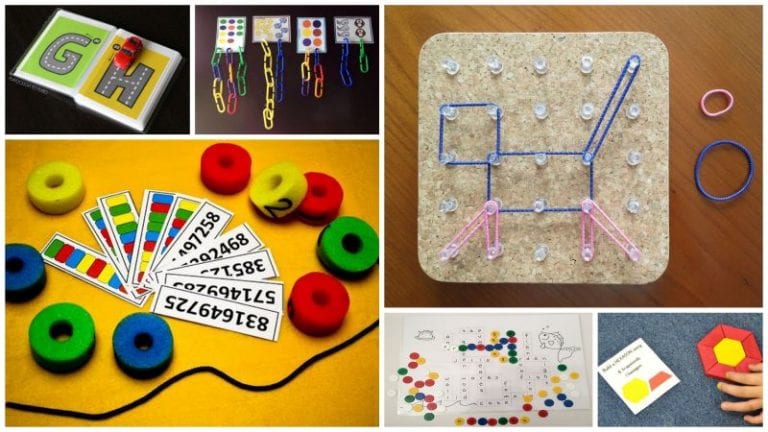On the first day of school, Ms. Armstrong of TikTok’s @that.huffle.teacher split her students into groups, gave them a single whiteboard marker, and sent them to vertical whiteboards to solve a math problem. If you’re thinking that doesn’t sound like a typical first-day activity, you and Ms. Armstrong’s students would be in agreement.
But what the kiddos didn’t realize is that their teacher was introducing them to routines inspired by some of the foremost research on mathematics instruction—and beginning a journey that would change their identity as math students. Curious about how a whiteboard command attached to the wall and a single marker could be so transformational? I’ll let Ms. Armstrong explain.
Did any of the strategies in there ring bells? Maybe you’ve heard about “vertical nonpermanent surfaces.” Or perhaps you’ve heard the name Peter Liljedahl or the title “Building Thinking Classrooms in Mathematics” tossed around in a department meeting. If you’re not familiar with Liljedahl’s work, you probably have some questions after watching this video. Let’s take a closer look at some of the main strategies Ms. Armstrong highlighted, and explore why it’s so beneficial to student learning.
Strategy: Hang whiteboards on the walls
It might seem unusual that the whiteboards were affixed to the walls, but there’s a good reason for it. Liljedahl and his team intensely researched the best work surfaces for promoting student engagement. They found vertical whiteboards outperformed horizontal whiteboards, vertical paper, horizontal paper, and individual notebooks in a multitude of metrics. These included time to task initiation, amount of discussion and participation of and between group members, and many others. By hanging her whiteboards, Ms. Armstrong instantly set her students up for engagement beyond what they would experience sitting at their desks.
Curious about why the shift from a horizontal to vertical work surface is such a game changer? For one thing, there are much fewer ways for students to disengage when standing clustered around a whiteboard. By getting students up and out of their chairs, the distraction of reaching into one’s desk or backpack is diminished. It’s also harder to “zone out” in a standing position. Additionally, it’s much easier for a teacher to have eyes on their students when they aren’t hidden behind a desk, making students less comfortable to engage in off-task behaviors.
As for the whiteboard versus paper, Liljedahl’s research uncovered that the erasability is key in student’s academic risk-taking. When students feel there is no permanent record of their mistakes, they are far more willing to begin testing different strategies to solve a problem. It’s worth noting this works with ANY vertical erasable surface, including chalkboards, windows, or shower board, hence the broad-brush term “vertical nonpermanent surfaces.”
Why only one marker per whiteboard group?
Initially, it seems counterintuitive that Ms. Armstrong could promote engagement by limiting groups to a single whiteboard marker. Wouldn’t more markers give each student an opportunity to document their thinking? In the 40+ classrooms Liljedahl studied, this is not what he found. In fact, he describes a scenario where “the group quickly dissolves into three individuals working in parallel rather than collaborating.” Any teacher who has tried to implement group work in their classroom has undoubtedly seen this unfold.
If you’re worried that one student will dominate the group, consider requiring students to move the marker between group members at regular intervals. Students who don’t feel comfortable documenting their own thinking can record others’ ideas. This is a valuable practice to build communication skills by requiring students to listen to one another and clearly express their ideas.
What are students actually doing at the whiteboards?
Ms. Armstrong shared that she gave her students a “non-curricular thinking task” on their first day of school. It may be a long phrase, but I promise there’s more to it than just the latest edu-babble. A non-curricular thinking task is a task that requires mathematical thinking, but does not map clearly to an intended curricular outcome (think: brain teaser). A well-constructed NCTT blends approachability with challenge. All students have an entry point to engage with the task, but they need to draw on their group’s shared knowledge to make continual progress. The nature of these tasks is highly engaging, since all students have a way to participate in their groups.

Liljedhal recommends beginning the year with NCTT to practice routines and build engagement before using thinking classroom strategies to tackle math curriculum. A popular one is “Four Fours,” which can be used with a variety of grade levels. The task asks students, “Can you find every number between 1 and 20 using only four 4’s and any operation?” I found the challenge of this problem addictive once I started, and many teachers have reported their students do as well!
Inside Ms. Armstrong’s Thinking Classroom
You can read all the research in the world, but nothing is more convincing than a teacher’s testimonial. Ms. Armstrong’s description of her classroom as a result of thinking classroom strategies is truly moving: “If you are on the fence about exploring a thinking classroom, I would 100% say go for it. The excitement in my classroom is something that brings joy to me every day. And it’s just really amazing to see all types of learners willing to take risks and participate in mathematical discussions.”
For more content like this, be sure to subscribe to our newsletters!


